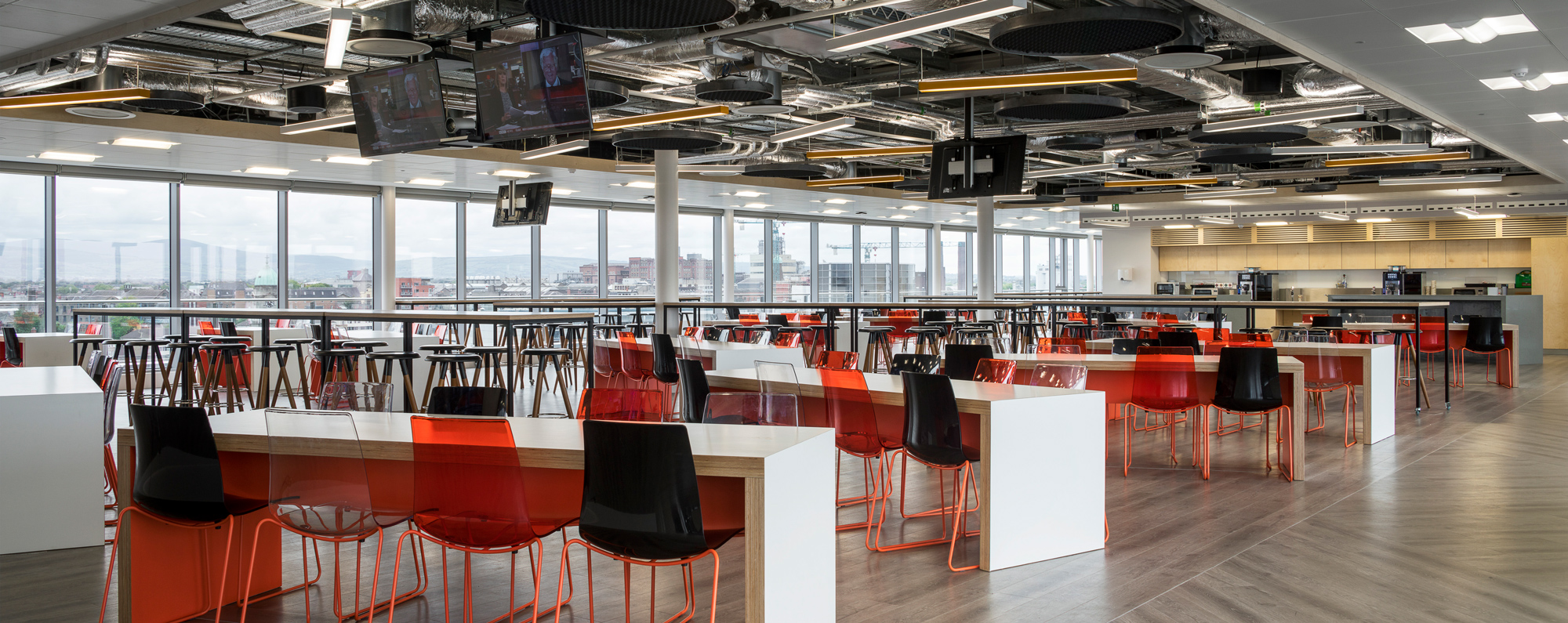How Technology Companies are Changing Construction
Dublin, Ireland, with a population of just 1.3 million, is home to nearly every major global technology firm you can imagine, including Facebook, Google, Intel, Oracle, Yahoo!, Ancestry.com and Prometric. Structure Tone spoke recently with John Rattigan, Managing Director, and Rory Quinn, Associate Director, Lafferty, Project Managers | Architects based in Dublin, whose clients include Yahoo!, Workday and Twitter, to discuss how design and construction in the Irish market is evolving.
Structure Tone (ST): How have technology companies changed workspaces?
John Rattigan/Rory Quinn (JR/RQ): Technology companies brought an entirely different way of thinking to projects. They’ve radically changed how people experience spaces by exposing the buildings’ raw materials—the structure, concrete walls/ceilings and floors, and exposed services.
Similarly, fit-outs have evolved from spaces that regularly were in cellular configuration. Now employees work in neighborhoods of 30 or more with ancillary space for collaboration to allow time away from the group as needed. Previously designed large meetings rooms for 10-plus persons have now been replaced with two and four-person spaces for meeting and collaboration. These provide comfortable areas to work. Break-out spaces with soft seating, sit/stand desks and game rooms are also becoming the norm. This work environment is conducive to the new way technology companies are working and communicating. We are also seeing a high degree of video conferencing installation with a high degree of usage for US conferences.
Technology companies have also demonstrated increased capital expenditure in fit-outs, providing staff with facilities like rooftop gardens, gyms, wellness spaces, cafés, fully catered kitchens and showers. Technology companies aim to provide everything employees need to be productive, comfortable and effective. The new design environment created by the technology company reflects the company ethos.
ST: What are some of the best practices?
JR/RQ: A Lafferty project, Ancestry.com, was awarded Fit-Out Project of the Year in 2013. This represented a good example of a successful project. First, the architect had a compelling vision of how to transform the space. Lafferty completed a detailed due diligence process so the client’s best interests were protected prior to legal signings.
“By using BIM 360™, we were able to show the U.S.-based client team exactly how the designs would work in the space, and elicit early input into the design process, which enabled us to do the entire onsite delivery of the project in nine weeks.”
ST: What do corporations get right in their approach to projects?
JR/RQ: The best clients have the right people in place to communicate the design principles of the projects. It is becoming more common for large technology companies to assign an internal project manager or REW manager who understands the inputs required to the design process. The U.S. companies are also very effective in engaging internal stakeholders and user groups to review and sign off on key decisions, which ensures a smooth process.
Several clients operate their own real estate, design and construction departments so they already know what they want to accomplish, and provide clear and concise direction to the architect in terms of the look and feel, as well as key metrics such as occupancy, density, meeting room use, etc. The most effective clients think about their medium-to long-term plans, as well as the immediate project. With the vision and metrics determined from the outset, the projects run smoother.
ST: What elements tend to be overlooked in the construction process?
JR/RQ: It is rare to find a building that doesn’t have an issue, so undertaking a comprehensive due diligence to assess the building’s statutory and technical status is paramount. This process enables a tenant to enter into a lease with full information about the condition of the property and what interventions or modifications are required.
ST: What one piece of advice would you share with a client?
JR/RQ: One should not underestimate the time involved, from project initiation to completion, to deliver a quality project in a controlled environment. The selection of the right team will aid this process and it is equally important that the right team is tailored to the right project.
ST: How has your client evolved?
JR/RQ: The age profile and structure of client organizations have changed. Many of today’s clients are in their 20s and 30s. Clients are more socially responsible and have a desire to incorporate edgy design and health and wellness into their spaces. They’re designing sustainable, flexible, efficient and comfortable places to work.
